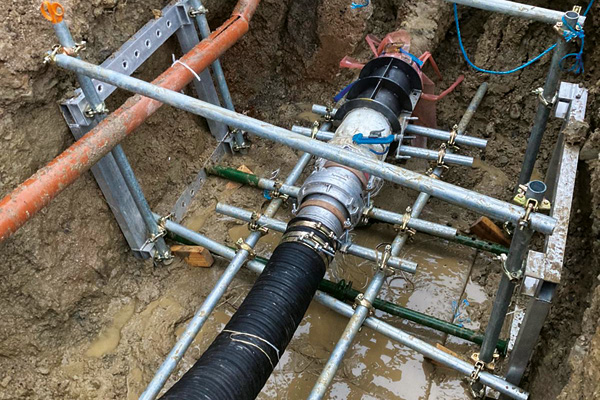Severn Trent has a vast network of pipes that supplies water to its four million customers. In fact, if you stretched them out in a line, they’d measure 46,000km long. That’s long enough to reach around the Earth, with a bit leftover. A network on this scale needs continual repair and maintenance, to make sure it can deliver a reliable and high-quality product to customers, as well as minimising leakage.
However, this level of maintenance has significant cost, which ultimately is passed on to customer bills. There’s also a direct impact on the customer, via disruption from traffic management and interruptions to supply.
Pipe renewal options are currently limited to open cut replacement, pipe bursting or slip lining. They all have an impact on the customer or on the capacity of the network. That’s why the water industry is continually seeking new and innovative ways to reduce the impact of its repair and maintenance activities.
Severn Trent and Hafren Dyfrdwy, alongside two other UK water companies, have joined forces to generate innovation in this area. After several years of research and development, a novel structural liner has been developed by Aqualiner, in conjunction with Severn Trent, Yorkshire Water and Anglian Water. The lining material is a glass-reinforced polypropylene; and is the only Reg 31 approved, fully structural lining available. Aqualiner offers significant benefit compared to existing techniques. These include:
- The system is 40% lower in cost than open-cut and is cost competitive with slip lining techniques.
- Can line any material and does not require the host pipe to be structurally sound
- Smaller reduction in pipe volume than slip lining. Aqualiner reduced the capacity of the pipe by ~5% compared to ~25% for slip lining
- The installation process requires a smaller footprint in the carriageway than slip lining techniques. This results in less traffic disruption. The system does this by avoiding the need the join lengths of pipe before they are inserted into the host pipe
- Aqualiner has also has a smaller installation footprint and creates less noise and vibration than pipe bursting. It also avoids issues with repair collars that can occur during pipe bursting.
- Avoidance of the need for heating and extended curing times associated with epoxy lining. The installation process can also be completed within one hour.
Aqualiner have just delivered the world’s first installation on a live water supply network in Hafren Dyfrdwy, part of the Severn Trent group. The installation was on a 9” cast iron pipe with significant tuberculation. Prior to the installation the pipe was scrapped and cleaned. However, due the innovative nature of Aqualiner, no further preparation was required. This is a significant advantage over other techniques as the pipe wall did not need to be dried or cleaned to ensure adhesion of the lining material. In fact, Aqualiner is capable of lining sections where the host pipe is no long structurally sound, or where part of the pipe wall is missing.
The Aqualiner process is undertaken by pulling the new liner through the old pipe and heating it to 200oC with an electrical heating element built into a pig. The pig is moved along the pipe at a controlled speed by an inversion bag; which also moulds the new liner against the wall of the host pipe. Because the heating element does not come into contact with the wall of the host pipe, it can line any material including plastic pipes.
Jamie Perry, Innovation Trials lead for Severn Trent said: “Aqualiner has the potential to offer us a more efficient, less disruptive way of dealing with our aging network of pipes by structurally lining the inside. Currently, our main option is to renew problematic pipes by digging them up and replacing them. Aqualiner has the potential to fully structural line a pipe with reduced excavations and less time on site. Ultimately, this means our customers experience less disruption. We look forward to our continuing partnership with Aqualiner, as we further develop their system to include a greater range of pipe diameters.”




